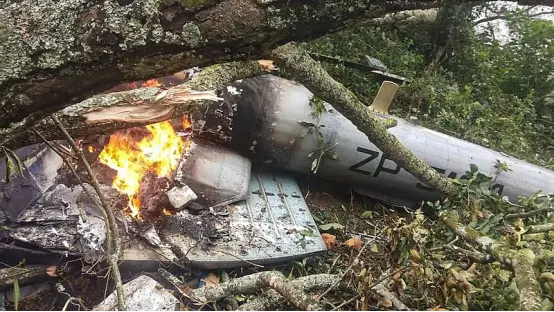By APD Writer Lu Jiafei
In his first prime-time address to the nation since taking office, U.S. President Donald Trump unveiled what he called a “dramatically different” plan on Afghanistan war.
It wasn’t.
As the American war in Afghanistan will soon enter its 16th year, Trump on Monday officially became the third U.S. president in a row to own the swamp-like war that has no end in sight.
U.S. President Donald Trump boards Air Force One prior to departing Morristown Municipal Airport en route Camp David, Maryland, where he'll meet with his national security team to discuss a U.S. security strategy for South Asia that includes sending more U.S. soldiers to Afghanistan, in Morristown, New Jersey, U.S., August 18, 2017.
Despite his proud boast of himself being a “problem solver” and soaring promises to win in Afghanistan, what he offered represented few changes from the past administrations and was the latest indicator that America is out of ideas in its longest war.
“To prosecute this war, we will learn from history,” said Trump, before detailing a strategy which seemed more like copying from history.
In a national security speech strewn with abstract ambition, the only seemingly “dramatic” changes rested mainly on two elements, a so-called shift from a time-based approach to one based on conditions, and the so-called shift from nation-building in Afghanistan to “killing terrorists.”
However, even this pair of core pillars of Trump’s new strategy were not immune to his habitual inaccuracy and exaggeration, and were not something the United States hadn’t done yet.
Before he became a candidate for president, Donald J. Trump was clear about Afghanistan. But during his campaign, he switched views. By CHRIS CIRILLO and MARK SCHEFFLER on Publish Date August 21, 2017.
During the speech, Trump proclaimed it as “counterproductive” for the United States to announce in advance the dates to begin, or end military options.
“We will not talk about numbers of troops or our plans for further military activities,” said Trump. “Conditions on the ground- not arbitrary timetables- will guide our strategy from now on.”
It is true that former U.S. President Barack Obama once set deadlines for withdrawing U.S. troops in Afghanistan and was widely criticized for leading Taliban to believe that they could simply sit out his deadline for leaving the region.
However, despite never uttering explicitly the shift from a time-based approach to one based on conditions, Obama in his later phase of presidency decided to leave 8,400 U.S. troops in Afghanistan in a noncombat role.
Also in his speech, Trump continued one of his campaign catchphrases that “We are not nation-building again. We are killing terrorists.”
“We will no longer use American military might to construct democracies in faraway lands, or try to rebuild other countries in our own image. Those days are now over,” said Trump.
The truth is, Obama, with whom Trump had been struggling to make as stark contrast as possible, was not seeking nation-building in Afghanistan either.
The point was made crystal clear in one of Obama’s speeches concerning U.S. troop pullout in Afghanistan back in 2011.
“The goal that we seek is achievable, and can be expressed simply: No safe haven from which Al Qaeda or its affiliates can launch attacks against our homeland or our allies. We won't try to make Afghanistan a perfect place,” said Obama then.
The bitter irony for Trump is that during that same speech back in 2011, Obama used the very sentence Trump had been using with vigor since his unconventional campaign started in 2015.
“America, it is time to focus on nation-building here at home,” said Obama.
Lu Jiafei, researcher of APD Institute. After spending one year in Palestine covering the Israeli-Palestinian conflict between 2013 and 2014, Lu moved to Washington, D.C. and covered the 2016 U.S. presidential election till the very end of Donald Trump’s upset victory. He is a political contributor to APD.
(ASIA PACIFIC DAILY)
 简体中文
简体中文

